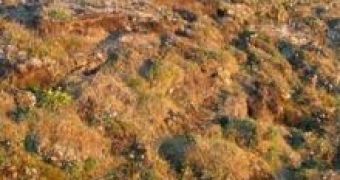At the edge of the Arctic, citizen scientists spend February vacation time helping University of Alberta researchers monitor the degradation of permafrost and its impact on the atmosphere.
Dramatic evidence of climate change ranges from the shrinking polar icecaps to the timing of bird migrations. But perhaps the most dramatic impact will be felt in the Arctic, where melting permafrost stands to release tons of carbon dioxide and methane, a veritable time bomb of greenhouse gases. Earthwatch teams are helping Dr. Peter Kershaw conduct research in the remote town of Churchill, Manitoba, at the very edge of the Arctic, to monitor the extent of that impact.
Churchill is sitting atop one of the largest accumulations of carbon on the planet. These vast stores of carbon have been safely locked into the peat for millions of years, frozen a meter (about three feet) below the surface.
The concern is that now as the earth warms, the permafrost may not be so permanent and the peat may release its abundant carbon. The release could be both in the form of carbon dioxide and methane, a far more potent greenhouse gas that could amplify the warming effect.
Dr. Peter Kershaw of the University of Alberta is one of the foremost experts studying this terrain and reports the permafrost degrading at about one percent per year. It is a number that does not sound extraordinary until one realizes that almost one quarter of the Earth's landmass is affected by this permafrost.

 14 DAY TRIAL //
14 DAY TRIAL //